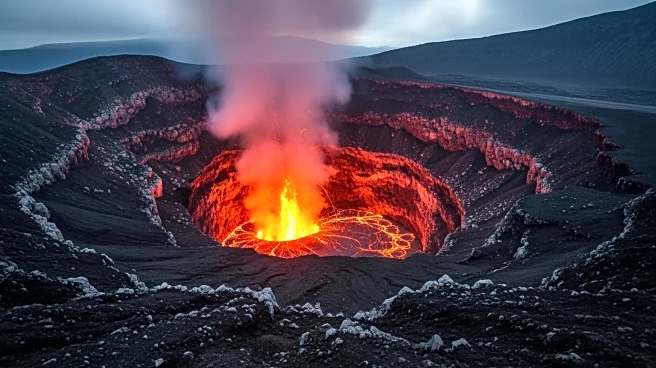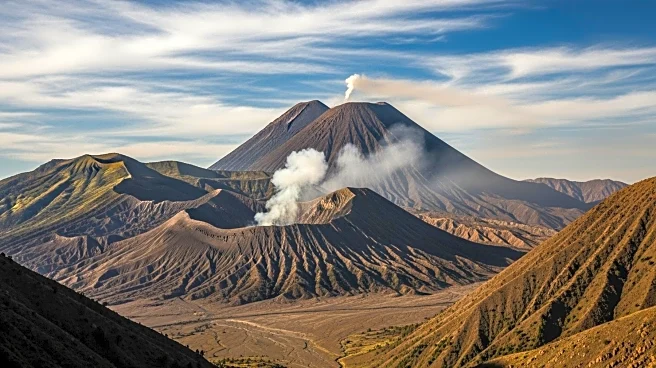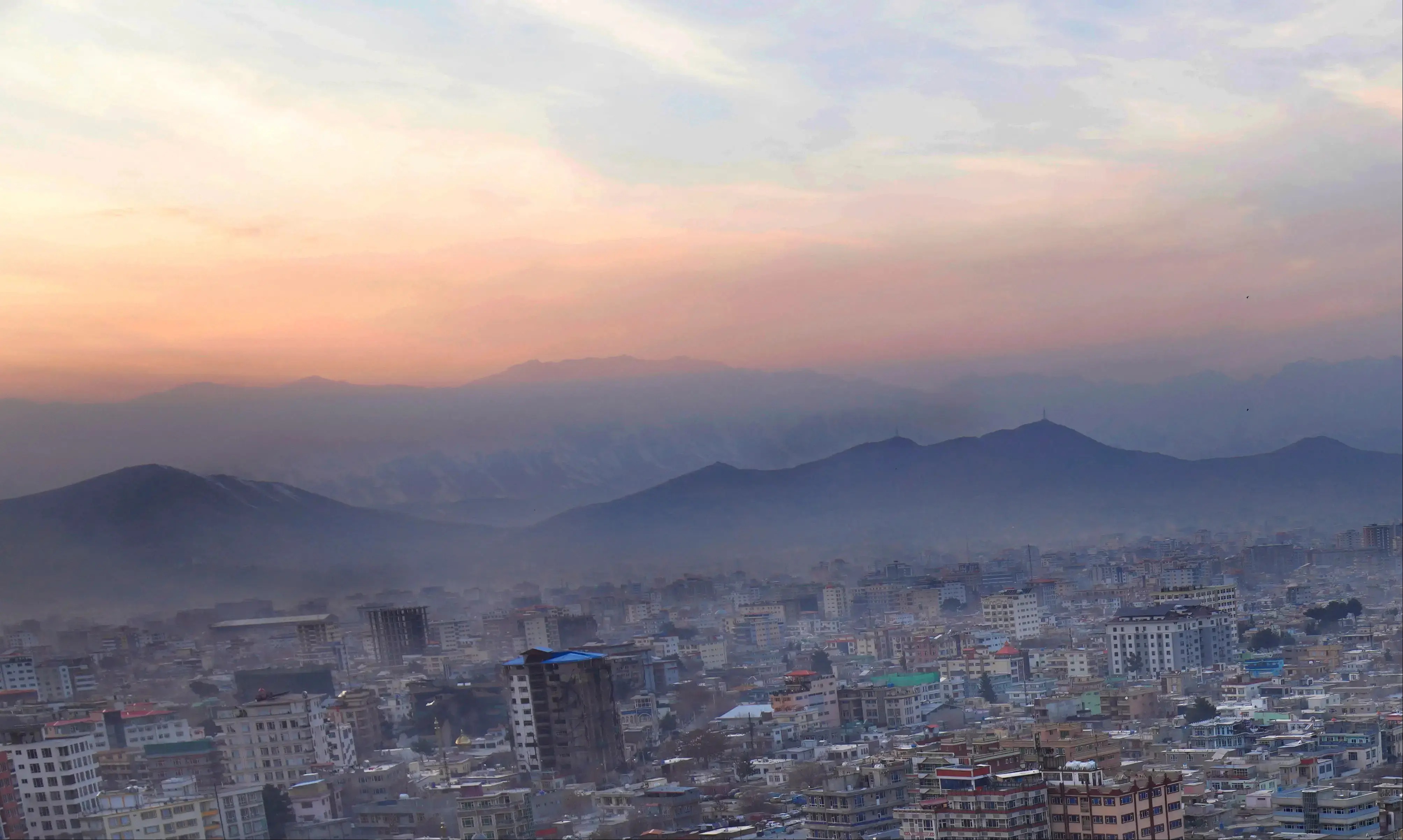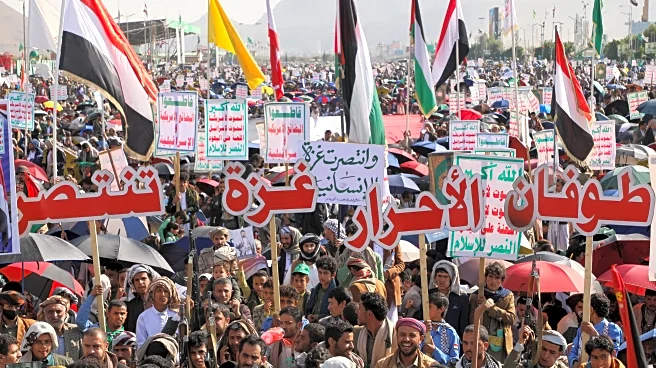What's Happening?
Researchers have identified signs of potential volcanic activity at the Taftan volcano in eastern Iran, which has been dormant for approximately 700,000 years. According to a study published in Geophysical
Research Letters, rapid uplift was detected near the summit of the 13,000-foot-tall volcano between July 2023 and May 2024. The analysis suggests that neither rainfall nor earthquakes have triggered this unrest, indicating a possible explosive eruption. The volcano, located near the Afghanistan border, frequently expels gas but has not experienced a major eruption in hundreds of thousands of years. The study highlights changes in gas permeability and undetected deep magma movement as factors contributing to hydrothermal pressure buildup.
Why It's Important?
The potential eruption of the Taftan volcano poses significant risks to the surrounding region, which includes the Makran subduction volcanic arc. This area, stretching about 275 miles along the Indian Ocean, is not currently monitored as closely as other volcanic regions due to its remote location. The findings underscore the need for enhanced monitoring and risk assessment to mitigate potential hazards. An eruption could impact local communities, disrupt air travel, and affect regional climate conditions. The study calls for the establishment of volcano monitoring networks to better predict and manage volcanic activity in this under-monitored area.
What's Next?
The study suggests an urgent need to revise the current volcano risk assessment for the Makran subduction volcanic arc and to implement monitoring networks in the region. Space-based satellite sensing remains the primary method for detecting transitions from dormancy to unrest in remote volcanoes like Taftan. Researchers and local authorities may need to collaborate to develop more comprehensive monitoring systems to ensure timely warnings and preparedness for potential eruptions. The international scientific community may also focus on further research to understand the dynamics of dormant volcanoes and improve predictive models.
Beyond the Headlines
The potential eruption of Taftan raises broader questions about the monitoring and management of remote volcanic regions. The reliance on satellite data highlights the challenges faced in tracking volcanic activity in areas with limited infrastructure. This situation underscores the importance of international cooperation in sharing technology and expertise to enhance global volcanic monitoring capabilities. Additionally, the study may prompt discussions on the ethical responsibilities of scientists and governments in communicating risks to affected populations and ensuring adequate preparedness measures.












